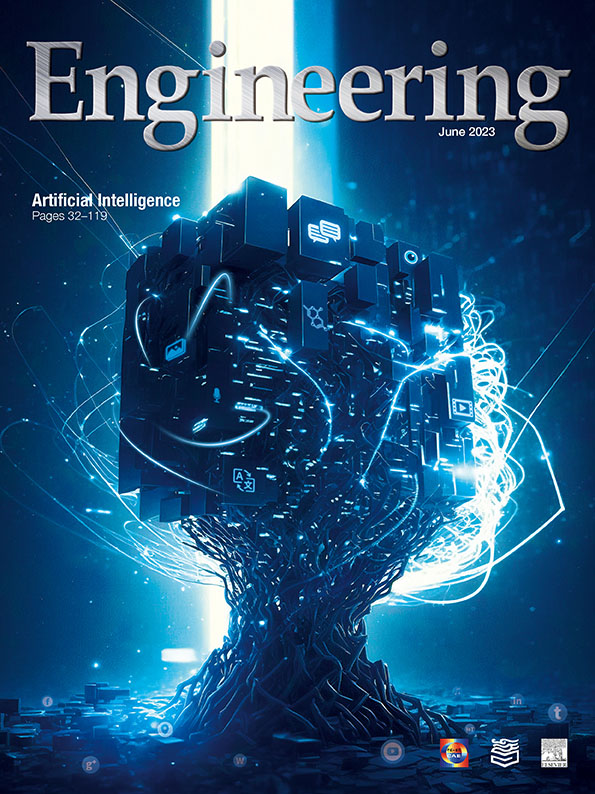
In the coming decades, artificial intelligence (AI) will transform society and the world economy in ways as profound as the changes brought by many general-purpose technologies (e.g., the steam engine, electricity, the computer, and the Internet) in past centuries and likely at an even faster pace. This AI revolution presents tremendous opportunities to unleash human creativity and catalyze economic growth, relieving workers from performing the most dangerous and menial jobs. Moreover, many researchers are pursuing more general AI systems that are generally smarter than humans in any intellectual task—an effort referred as artificial general intelligence (AGI). In other words, a more general AI system can understand, learn, and perform tasks at a level comparable to human intelligence [1–4].
In recent years, some large language models (e.g., OpenAI’s ChatGPT and Google’s PaLM) have been shown to exhibit more general intelligence than previous AI models across a variety of domains and tasks. These large language models (LLMs) can generate novel and unexpected responses—a significant departure from earlier routine models that were limited to generating predictable and formulaic responses. Nevertheless, LLMs rely heavily on statistical pattern recognition and machine learning algorithms and thus struggle with tasks that require a deep understanding of context. In addition, LLM responses can sometimes be repetitive or contain non-factual information (due to AI hallucinations). From a genuine causal explanation perspective, LLMs are phenomenological statistical models [5].
As the AI community continues to push the boundaries of what is possible, it is essential to consider the ethical implications of creating AGI systems. The development and deployment of trustworthy, reliable, and interpretable AI should be a priority, ensuring that the benefits of AI advancements are shared equitably and that potential risks are mitigated. We argue that the goal of AGI is not only to be technologically general but also to enable intelligent technologies to better empower society and benefit all of humanity [6]. The pursuit of a more general AI system is a complex and challenging endeavor, but the potential benefits for humanity could be transformative. For example, a more general AI system could revolutionize healthcare, education, transportation, and manufacturing. It could also lead to more efficient and accurate diagnosis and treatment of diseases, as well as aiding in the discovery of new scientific knowledge that changes the limits of possibility, personalized learning experiences, and fully automated factories that can adapt to dynamic changing demands.
This special issue reports on different aspects of a recent rethinking of more general empowering AI for society and humanity, including theoretical research, algorithmic models, and practical methodologies. In the article titled ‘‘Structure analysis of crowd intelligence systems,” Yunhe Pan analyzes the general characteristics of different categories of crowd intelligence system structures, with a full discussion of structures, mechanisms, and examples of three types of important crowd intelligence systems. In ‘‘A theoretical computer science perspective on consciousness and artificial general intelligence,” Lenore Blum and Manuel Blum discuss the Conscious Turing Machine (CTM) for the purpose of investigating a theoretical computer science (TCS) approach to consciousness. The CTM offers a thoughtful and novel guide to the creation of an AGI.
The review ‘‘Communicative learning: A unified learning formalism” by Luyao Yuan and Song-Chun Zhu proposes a communicative learning (CL) formalism that unifies existing machine learning paradigms, such as passive learning, active learning, algorithmic teaching, and so forth, and facilitates the development of new learning methods. This formalism poses learning as a communicative process and combines pedagogy with the burgeoning field of machine learning. The review ‘‘Pre-trained language models and their applications” by Haifeng Wang et al. shows that pre-trained language models are leading a paradigm shift from supervised learning to pre-training followed by fine-tuning. This article presents a comprehensive review of representative work, recent progress, and future challenges in the field of natural language processing (NLP).
In ‘‘Engram-driven videography,” Lu Fang et al. propose a dualpathway imaging mechanism called engram-driven videography that works by alternating between the excitation–inhibition and association states. In the excitation–inhibition state, pixel-level details become dynamically consolidated or inhibited to strengthen the instance-level engram. In the association state, the spatially and temporally consistent content becomes synthesized, driven by its engram, permitting outstanding videography quality of future scenes. In the article ‘‘1000× faster camera and machine vision with ordinary devices,” Tiejun Huang et al. present the concept of vidar, a bit sequence array in which each bit represents whether the accumulation of photons has reached a threshold, in order to record and reconstruct the scene radiance at any particular moment. They have developed a vidar camera that is 1000× faster than a conventional camera.
In ‘‘Artificial intelligence for retrosynthesis prediction,” Yinjie Jiang et al. present a review of retrosynthesis prediction with AI techniques. AI-driven retrosynthesis prediction automatically learns chemistry knowledge from off-the-shelf experimental datasets to predict reactions and retrosynthesis routes.
In recent years, data has become one of the most important resources in the digital economy. The article titled ‘‘Data-driven learning for data rights, data pricing, and privacy computing” by Jimin Xu et al. reviews the issues of data rights, data pricing, and privacy computing in machine learning technologies. With the long-term goal of using AI to benefit human society, AI algorithms will be assessed by data-protection regulations (i.e., privacyprotection regulations) to help build trustworthy AI systems for daily life.
We would like to express our appreciation to the reviewers of this special issue for their timely and professional comments. Most importantly, we extend our thanks to all the authors who submitted their manuscripts for consideration. Special thanks go to the members of the special issue editorial board: Ce-Wu Lu, Fisher Yu, Han-Wang Zhang, Hao Su, Heng Huang, Jun-Gong Han, JunWei Liu, Jun Zhu, Xi Li, Xiao-Ming Liu, Xue-Long Li, Yi-Ran Chen, Yu-Gang Jiang, Yu Qiao, Zhen Wang, Jiwei Li, and Kun Kang. Their support has made this special issue successful. Furthermore, we thank the members of the Disruptive Information Technology research group of the Department of Information and Electronic Engineering at the Chinese Academy of Engineering.













 京公网安备 11010502051620号
京公网安备 11010502051620号




